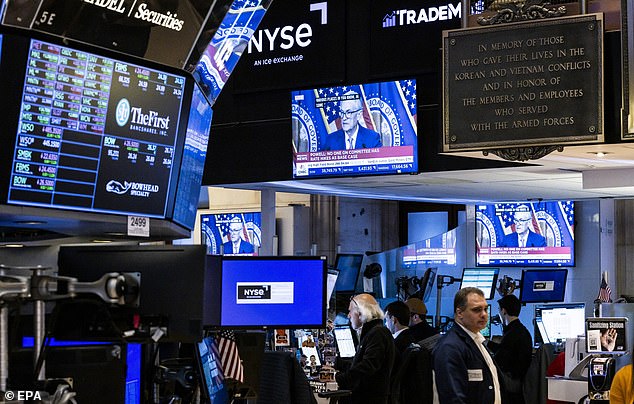US stocks experienced an unexpectedly strong rally in the first half of the year, but the momentum may not last, according to the Wells Fargo Investment Institute (WFII).
The S&P 500 index surged nearly 13 percent to reach 5,375 by mid-June which far exceeded, its previous record and WFII’s 2024 target range of between 4,600 to 4,800.
While interest rates remain high, companies still managed to achieve an impressive growth in profits with corporate earnings rising nearly 6 percent in the first quarter, roughly double the estimated 3 percent.
But looking ahead WFII believes the S&P 500 has limited growth potential for the second half of 2024.
When it comes to investing, WFII recommends large-cap over small-cap stocks. Large cap stocks are shares of companies with a market capitalization of $10 billion and often considered safer investments.

The S&P 500 index surged nearly 13 percent to reach 5,375 by mid-June which far exceeded, its previous record and WFII’s 2024 target range of between 4,600 to 4,800
Larger companies with strong balance sheets are also expected to fare better in a slowing economy.
WFII is optimistic about certain sectors including energy, healthcare, industrials, and materials.
Wells Fargo favored energy stocks when US crude oil was priced at $71 per barrel.
Oil prices have now risen to around $78, but remain below the year’s peak.
Healthcare stocks are also expected to see steady demand and earnings, while industrial and materials stocks should benefit from government stimulus, green energy transitions, data center growth, and as supply chains return to normal.
WFII’s senior global market strategist Sameer Samana expressed skepticism about future gains over the next six month.
‘If I had to tell you which direction the next 7 percent to 10 percent comes, I would say it’s lower. I can’t make the math work to the upside — at least until something more meaningful changes,’ Samana said.

The rally in stocks over the past year-and-a-half has been partly driven by people with a fear of missing out on the AI-driven surge
Although Samana does not foresee a market crash, he noted that current US stock valuations are high, with the S&P 500’s forward earnings multiple at 21 times, suggesting that the positive profit growth this year is already priced into the market.
‘Because of those full valuations and because we’ve discounted quite a bit of that earnings growth, it probably means kind of muted returns for much of the rest of this year,’ Samana said.
‘I don’t think paying ever-higher multiples is a game that anybody wins. It’s definitely not one we want to play,’ the strategist added.
The rally in stocks over the past year-and-a-half has been partly driven by people with a fear of missing out on the AI-driven surge, with the S&P 500 climbing over 24 percent last year, despite minimal earnings growth due to inflation.
‘A lot of it can be chalked up to the difficulty in sourcing labor, stubbornly high input costs, supply chains that were disrupted. It seems like companies are finally starting to get a lot of that under control — a more normal operating environment,’ Samana said.
‘Unfortunately, the top line is starting to slow because the economy is starting to slow, and you can see that most in consumer-oriented parts of the S&P,’ Samana said.
But as economic growth slows, generating revenue while maintaining profit margins will become more challenging.
WFII does not anticipate a recession but is cautious about the financial stress on lower-income consumers, who are more affected by inflation and interest rates.
Geopolitical issues, including conflicts in Ukraine and the Middle East could also add to market volatility.
While the S&P 500 continues to rise, WFII remains wary and cautious about the outlook for the next six months.






